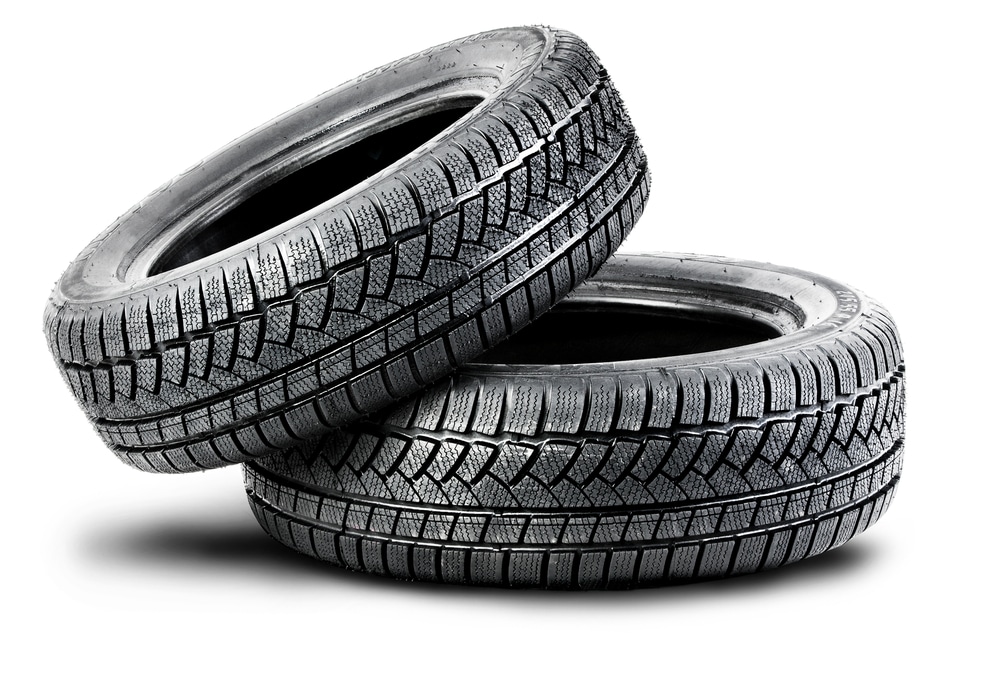How to Safely Ship Tires and Rims

Safe, Efficient, and Cost-Effective Shipping of Tires and Rims
Shipping tires and rims can be a daunting endeavor, but with careful planning and attention to detail, it can be done safely, efficiently, and cost-effectively. In this guide, we will explore the importance of proper packaging, selecting the right shipping provider, preparing tires and rims for shipping, best packing practices, securing your items, international shipping considerations, common mistakes to avoid, cost-saving strategies, insurance options, legal requirements, troubleshooting tips, environmental impact, and tracking your shipments for peace of mind.
Proper Packaging for Shipping Tires and Rims
Proper packaging is critical to ensuring that your tires and rims arrive at their destination in excellent condition. Improper packaging can lead to damage, resulting in costly repairs or replacements.
Choosing the Right Packaging Materials
Use sturdy boxes or crates appropriate for the size and weight of the items being shipped. Reinforce boxes with high-quality tape and use padding materials like foam inserts or bubble wrap to prevent shifting and provide cushioning during transit.
Labeling and Handling Instructions
Clearly label each package with its contents and include orientation arrows to ensure correct handling. Proper labeling helps carriers manage the shipment with the necessary care.
Selecting the Best Shipping Provider
Choosing the right shipping provider can significantly impact the safety and cost of shipping your tires and rims.
Factors to Consider
- Specialization: Look for providers that specialize in shipping oversized or heavy items and have experience handling fragile objects.
- Reputation: Research the provider’s track record for on-time delivery, damage claims, and customer service ratings.
- Cost: Compare shipping rates and evaluate whether the provider offers competitive pricing without compromising on service quality.
Insurance Options
Ensure that the shipping provider offers comprehensive insurance options to cover the value of your tires and rims in case of damage or loss during transit. This adds an extra layer of protection and peace of mind.
Preparing Tires and Rims for Shipping
Proper preparation of your tires and rims is essential to prevent damage and ensure a smooth shipping process.
Cleaning and Inspection
Thoroughly clean the tires and rims to remove dirt, debris, and oil. Inspect them for any signs of damage or wear. Address any issues before shipping to avoid complications during transit.
Deflating Tires
Deflate the tires slightly to reduce the risk of punctures and make handling easier. Use a tire gauge to achieve the correct pressure based on the manufacturer’s guidelines.
Best Packing Practices
Effective packing minimizes movement and protects your items from impacts during shipping.
Organization Within the Package
Arrange tires and rims snugly within the box or crate to prevent shifting. Use dividers or compartments if shipping multiple items together.
Securing the Package
Use strong packing tape to seal all openings and reinforce the edges of the box. Consider using corner protectors for added durability.
Securing Tires and Rims for Shipping
Properly securing your items ensures they remain in place and protected throughout the shipping journey.
Wrapping Techniques
Use stretch wrap to bundle tires and rims together securely. For additional protection, apply shrink wrap around the entire package to guard against moisture and dirt.
Cushioning Materials
Fill any remaining gaps with foam padding or bubble wrap to absorb shocks and prevent movement during transit.
International Shipping Considerations
Shipping tires and rims internationally involves navigating customs regulations and additional costs.
Customs and Regulations
Research the customs requirements of the destination country. Many countries have strict rules regarding the importation of rubber products and oversized shipments. Non-compliance can result in fines or shipment delays. For detailed information, refer to the U.S. Customs and Border Protection or the respective authority in the destination country.
Additional Costs
Be prepared for extra expenses such as customs fees, duties, taxes, and currency exchange rates. These costs can significantly impact the total shipping budget.
Common Mistakes to Avoid When Shipping Tires and Rims
Avoiding common pitfalls can save you time, money, and prevent damage to your items.
Improper Labeling
Ensure all packages are clearly labeled with the correct contents and handling instructions. Incorrect labeling can lead to mishandling and damage.
Poor Packaging
Using inadequate packaging materials or failing to secure the package properly can result in shifting and damage during transit.
Ignoring Weather Conditions
Extreme temperatures can affect the integrity of your tires and rims. Opt for climate-controlled shipping options when necessary to protect your items.
Cost-Saving Strategies for Shipping
Shipping can be expensive, but there are ways to reduce costs without compromising safety.
Compare Shipping Rates
Use shipping calculators to compare rates from different providers. Look for discounts on bulk shipments or promotional offers.
DIY Packaging
Packaging the items yourself can save on additional service fees. Ensure you follow all packaging guidelines to avoid damage and potential fines.
Consolidate Shipments
Consider consolidating multiple shipments into one to take advantage of lower rates and reduce the number of packages in transit.
Insurance Considerations
Insurance provides financial protection against potential losses during shipping.
Understanding Coverage
Review insurance policies carefully to understand what is covered and any limitations or exclusions. Some policies may only cover specific types of damage or have coverage limits.
Choosing the Right Policy
Select an insurance policy that adequately covers the total value of your tires and rims. This ensures you are protected in case of damage or loss.
Legal Requirements for Shipping Tires and Rims
Compliance with legal regulations is essential to avoid fines and ensure smooth shipping processes.
Weight and Size Restrictions
Each carrier has specific weight and size limits for shipments. Exceeding these limits can result in additional fees or rejection of the shipment.
Hazardous Material Regulations
Some components of tires may be considered hazardous materials. Ensure you adhere to all regulations regarding the transportation of such items.
Import/Export Laws
Understand the import and export laws of both the sending and receiving countries. This includes any necessary permits or documentation required for shipment.
Troubleshooting Common Shipping Issues
Despite careful planning, issues can arise during shipping. Here’s how to handle them effectively.
Damaged Shipments
If your tires or rims arrive damaged, document the damage with photographs and contact the shipping provider immediately to file a claim.
Lost Shipments
Track your shipment using the provider’s tracking system. If the shipment is lost, inform the provider and initiate a search or claim process as soon as possible.
Delays in Shipping
Stay in communication with your shipping provider to receive updates on any delays. Adjust your plans accordingly and consider expedited shipping options if necessary.
Environmental Impact of Shipping Tires and Rims
Shipping has environmental implications, and it’s important to adopt sustainable practices where possible.
Reducing Carbon Footprint
Choose shipping providers that use eco-friendly practices, such as alternative fuel vehicles or carbon offset programs. Consolidating shipments can also reduce the number of trips required.
Recycling Packaging Materials
Use recyclable or biodegradable packaging materials to minimize environmental impact. Properly dispose of or recycle any used materials.
Tracking Your Shipped Tires and Rims
Tracking your shipments provides peace of mind and allows you to monitor their progress.
Using Online Tracking Services
Most shipping providers offer online tracking tools that provide real-time updates on your package’s location and estimated delivery time. Utilize these tools to stay informed.
Accurate Contact Information
Ensure that you provide accurate contact information when placing your order. This allows you to receive updates via email or text message and be alerted to any issues promptly.
Conclusion: Safe, Affordable, Hassle-Free Shipping of Tires and Rims
Shipping tires and rims does not have to be complicated or costly. By following the best practices outlined in this guide—such as proper packaging, selecting the right shipping provider, and understanding legal requirements—you can ensure a smooth and efficient shipping process. Incorporate these strategies to protect your investment, save money, and contribute to environmentally responsible shipping practices.

About the Author
Anthony Robinson is the CEO of ShipScience, a pioneering company dedicated to helping e-commerce leaders optimize their shipping decisions, reduce costs, and automate tedious processes. With a Bachelors Degree in Economics from Stanford University, Anthony brings over two decades of expertise in logistics, business development, and operational efficiency to the table.
Can I Ship Tires?

If you think you need to roll your tire to wherever you need to send it, think again! You can ship a tire with pretty much any shipping carrier out there, although one carrier in particular offers the best rates and service for sending a tire.
Table of Contents
- UPS is the Best Carrier for Shipping a Tire
- Properly Packing a Tire for Shipment
- UPS Ground is the Best UPS Service for Shipping Tires
UPS is the Best Carrier for Shipping a Tire
When it comes to choosing the right shipping carrier for your shipment, look no further than UPS. The fact of the matter is, tires are bigger and more oddly-shaped than most of the shipments that USPS offers, so the Postal Service will charge a heavy premium for handling these shipments.
UPS, on the other hand, offers the most affordable rates and quick delivery times for bulkier items like tires. In fact, when doing some rate shopping for the same package across different carriers, prices from UPS will blow prices from other options like FedEx out of the water.
Properly Packing a Tire for Shipment (or Not)
Before you go looking for boxes for your tire, stop! You actually don’t need to pack your tire into a box or use any special kind of packing material in order to ship it with UPS. Instead, packing a tire for shipment is a fairly straightforward process. We’ve listed out the steps below:
- Apply pressure-sensitive tape through the center of the tire, and then completely around the body of the tire. Make sure the tape attaches to itself, and repeat this process several times. You want to make sure the area on the tire that the tape covers is about six inches wide.
- If you don’t have any pressure-sensitive tape on hand, duct tape will work fine! Just don’t use flimsy tape, like Scotch tape or blue painter’s tape
These Tips are in Accordance with UPS Guidelines, and NOT Shipping Insurance Companies
Note that the above information on packaging tires is based on the UPS Packaging Guidelines, and isn’t necessarily in accordance with guidelines from shipping insurance companies. For insurance claims to be eligible with companies such as Shipsurance, shippers should still pack tires in a sealed, corrugated cardboard box used as outer packaging.
You can pick up cardboard boxes of all sizes on the ULINE website, and if you browse the “Boxes” section, you’ll be able to find boxes large enough to fit tires inside of them.
UPS Ground is the Best UPS Service for Shipping Tires
Out of all the UPS services, one of them stands out as the best for sending a tire: UPS Ground. Since tires are heavier and bulky, it’s easier for UPS to transport them on their trucks than it is on their airplanes—hence the cheaper rates for Ground.
Ground may be the cheapest service that UPS offers…but that doesn’t mean it’s the slowest! UPS typically delivers Ground shipments between 1-5 business days to any destination in the United States, and delivery may take place sooner than you think. In fact, UPS will deliver some Ground packages overnight, if the destination is close enough to where you’re shipping from!
Learn more about UPS Ground, and how it compares to the Postal Service’s ground service.
Mark Your Tire as an “Irregular Package”
One thing to note about shipping a tire: UPS considers them as “irregular packages,” which isn’t that big of a deal. Since this is the case, you’ll just need to designate it as an irregular package when you buy your label, or else they’ll hit you with an unexpected surcharge after you ship it. This really only matters when you’re entering your package information yourself with any online shipping software…which we’re about to get to in the next section.
Save Money on UPS Labels with Shipping Software
As is the case for shipping any other kind of package, you shouldn’t go to your local UPS Store to buy postage. You’ll end up spending an arm and a leg if you do! Instead, save money on your UPS label by buying it with online shipping software.
When you use online shipping software, you get access to the same level of discounts that shipping carriers like UPS reserve for huge commercial shippers. In some cases, these discounts can save you up to 50% off of what you’d pay to ship the same package with UPS Ground at the UPS Store. When it comes to sending a relatively large item like a tire, all those extra savings make a huge difference.
Another great benefit is that shipping software doesn’t just help you save money; it also gives you the gift of time and convenience by allowing you to print your postage right from the comfort of your own home. The best shipping software companies also allow you to schedule pickups with UPS for your packages right from your front door…so you never even have to leave your house, if you don’t want to!
